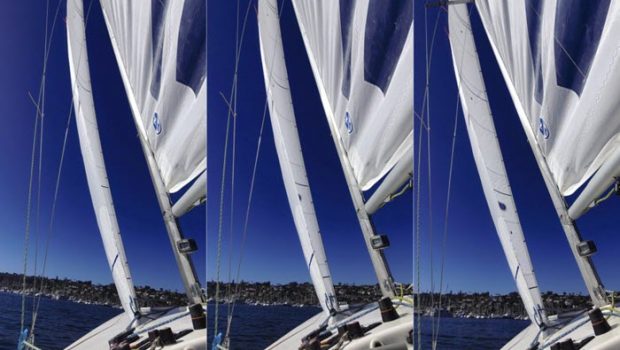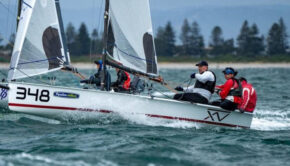Dynamics of headsail trim
Published on April 19th, 2022
The wind across your sails is dynamic, so too must be your sail trim. Pro sailor Erik Shampain explains (in over 4000 words!) the fundamentals of active headsail trimming.
Some people say the mainsail is the trickiest and most important source of power in the inventory, and be that as it may—depending on whom you ask—the headsail is incredibly dynamic and critical to everything that happens behind it with the mainsail. How the wind flows from over, around and behind dictates what happens when that flow reaches the main. Get the jib trim spot on, and the mainsail will do its thing. And with the jib, there are many influences—rig tension, halyard tension, sheet load and angle, to name a few. So, let’s break down the essentials to that flow working and getting the power where you want it.
Let’s start with headstay sag, which creates power in the headsail. In light air, a softer headstay powers up the sail by making it fuller. When it’s windy, a tighter headstay reduces power as it pulls draft out of the sail. And then there’s everything between those extremes. There are three primary ways to affect headstay sag—backstay, rig tension and mainsheet tension. The backstay is the most effective and often easiest to adjust of the three. An added bonus is the backstay also bends the mast, flattening the main. This helps keep the boat well-balanced. As puffs and lulls affect the sail plan, the backstay keeps both sails powered or depowered together.
The second option, for boats with aft-swept spreaders, is rig tension. By tightening the shrouds, you increase tension on the forestay. Generally speaking, given a fixed amount of backstay tension, tightening the shrouds creates more headstay tension. This is helpful if the mainsail is already flat and you don’t want to add more backstay, which might invert the main. Definitely check with your spar manufacturer or one-design guide about maximum shroud tension because it can add a lot of compression and load to the mast. Loosening the shrouds has the opposite effect, adding headstay sag.
The third option, mainly for smaller boats, is mainsheet tension. While its effect is different from boat to boat, mainsheet tension tightens or loosens the leech of the main, which in turn acts like a backstay—more mainsheet tension, more leech tension, less headstay sag.
Ready to take a deep dive? Click here.









 We’ll keep your information safe.
We’ll keep your information safe.